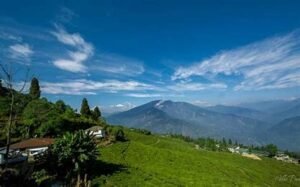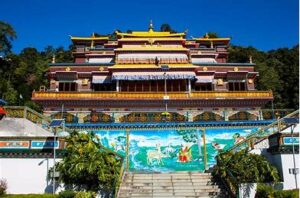Introduction
Behdeinkhlam is a traditional festival celebrated by the Jaintia tribe in Meghalaya, Northeast India. It is one of the most important religious festivals of the Jaintia people. The name ‘Behdeinkhlam’ translates to ‘driving away the plague’ in the local Pnar language. This festival symbolizes the community’s efforts to ward off diseases, evil spirits, and misfortunes. It is a vibrant expression of their faith, culture, and unity.
The significance of Behdeinkhlam extends beyond mere ritualistic practices. It is deeply intertwined with the agricultural lifestyle of the Jaintia tribe. During the festival, prayers are offered to deities for a bountiful harvest and protection from natural calamities. The festival not only aims to eliminate evil forces but also strengthens communal ties and collective responsibility towards ensuring a prosperous future.
Historical Roots
The origins of Behdeinkhlam are deeply rooted in the traditional beliefs of the Jaintia tribe. This festival has been observed for centuries, reflecting the tribe’s longstanding connection to nature and spirituality. It is primarily an agrarian festival aimed at invoking blessings for a good harvest and communal well-being.
Historically, Behdeinkhlam was celebrated as a means to cleanse the community of diseases, especially those that threatened crops and livestock. The festival’s roots can be traced back to ancient times when the Jaintia people relied heavily on agriculture for sustenance. Rituals were designed to ensure harmony between the community and the natural environment.
Language and Communication
The Jaintia people primarily speak Pnar, which belongs to the Mon-Khmer language family. Language plays a crucial role during Behdeinkhlam as chants, prayers, and songs are performed throughout the rituals. Oral traditions remain strong within the tribe, preserving their beliefs and customs over generations.
During Behdeinkhlam, traditional songs and chants are recited to honor deities and seek their blessings. These oral performances are not only religious in nature but also serve as a means of storytelling, passing down cultural knowledge from one generation to another. Pnar language serves as a crucial medium for maintaining cultural continuity.
Festivals and Celebrations
Behdeinkhlam is celebrated annually in July, mainly in the town of Jowai. It lasts for four days, with each day having its own significance. Rituals include sacrificing animals, processions, and dance performances. The festival is marked by the ceremonial driving away of wooden logs called ‘rots’ symbolizing evil spirits. Men also engage in a symbolic football-like game called ‘Datlawakor’ as a part of the celebrations.
Each day of Behdeinkhlam has unique rituals associated with it. The preparation phase involves community members gathering to construct elaborate wooden structures known as ‘rots.’ These structures are decorated with vibrant colors and motifs representing various themes, such as prosperity and protection. The grand procession of rots through the streets is one of the most striking aspects of the festival.
Arts, Crafts, and Music
Art and music are essential parts of Behdeinkhlam. Traditional dance forms are performed by men adorned in vibrant attire. Locally crafted wooden rots are decorated with intricate designs that represent various themes. Music, especially drums and cymbals, plays a significant role in the rituals, creating an atmosphere of joy and reverence.
The making of rots involves exceptional craftsmanship. Skilled artisans carve intricate patterns and symbols into the wooden logs, reflecting cultural narratives and artistic traditions. Music, particularly rhythmic drumming, serves as both a spiritual and celebratory tool during the festival, enhancing the overall experience.
Cuisine and Culinary Traditions
During Behdeinkhlam, special dishes are prepared and shared among the community. Rice-based dishes, meats, and traditional rice beer are commonly served. Food is offered to the spirits before being consumed, symbolizing gratitude and respect.
Feasting is an integral part of the festival, reflecting the community’s agricultural roots. Dishes prepared during Behdeinkhlam often include locally sourced ingredients, which further emphasize the tribe’s connection to the land. Sharing food also symbolizes unity and collective well-being.
Attire and Ornamentation
Traditional attire worn during the festival is simple yet culturally significant. Men often wear dhotis and headgear, while women dress in local fabrics. Ornamentation is minimal, focusing more on symbolic items used in rituals.
However, during special performances or processions, participants may wear elaborate costumes that highlight their cultural identity. The simplicity of everyday attire juxtaposed with ceremonial clothing emphasizes the tribe’s respect for tradition and spirituality.
Beliefs and Values
Behdeinkhlam reflects the Jaintia tribe’s deep-rooted belief in the presence of both good and evil forces. The rituals aim to eliminate negative influences and seek blessings from divine entities. Respect for nature, community bonding, and collective well-being are fundamental values upheld during the festival.
The festival underscores the tribe’s view of life as an ongoing struggle between positive and negative forces. By performing rituals to drive away evil spirits, the community seeks to restore balance and harmony. This belief system is reflected not only in religious practices but also in everyday life.
Customs and Etiquette
Respecting elders and following ritualistic guidelines are crucial aspects of the festival. Visitors are expected to observe the rituals with reverence and avoid interrupting the ceremonial processes.
Adherence to customs and etiquette during Behdeinkhlam highlights the community’s emphasis on respect and order. It also serves as a reminder of the tribe’s commitment to preserving its cultural heritage despite external influences.
Architecture and Symbols
The festival also showcases traditional Jaintia architecture, including thatched huts and ceremonial structures. Symbols used during the festival, such as the wooden rots, are crafted with precision and care, often representing local folklore or significant events.
Architectural designs are often inspired by natural elements, symbolizing the tribe’s deep connection to their environment. Decorative motifs are passed down through generations, serving as a visual representation of their history and beliefs.
Contributions to the Broader Region and World
The Jaintia tribe’s art, music, and folklore have contributed to the cultural diversity of Northeast India. Philosophical concepts related to nature worship and communal harmony resonate with broader audiences. The festival also draws attention to the significance of preserving indigenous cultures.
Connection to Northeast India
Behdeinkhlam is a testament to the rich cultural heritage of Meghalaya and Northeast India. It shares similarities with other regional festivals that honor nature, spirituality, and community well-being. While unique to the Jaintia tribe, it reflects the broader cultural patterns found throughout the region.
Conclusion
Behdeinkhlam is more than just a festival; it is a celebration of life, resilience, and cultural identity. Through its rituals, songs, dances, and art, the Jaintia tribe continues to pass down their heritage to future generations. Preserving such traditions is essential for maintaining the cultural diversity of Northeast India.




